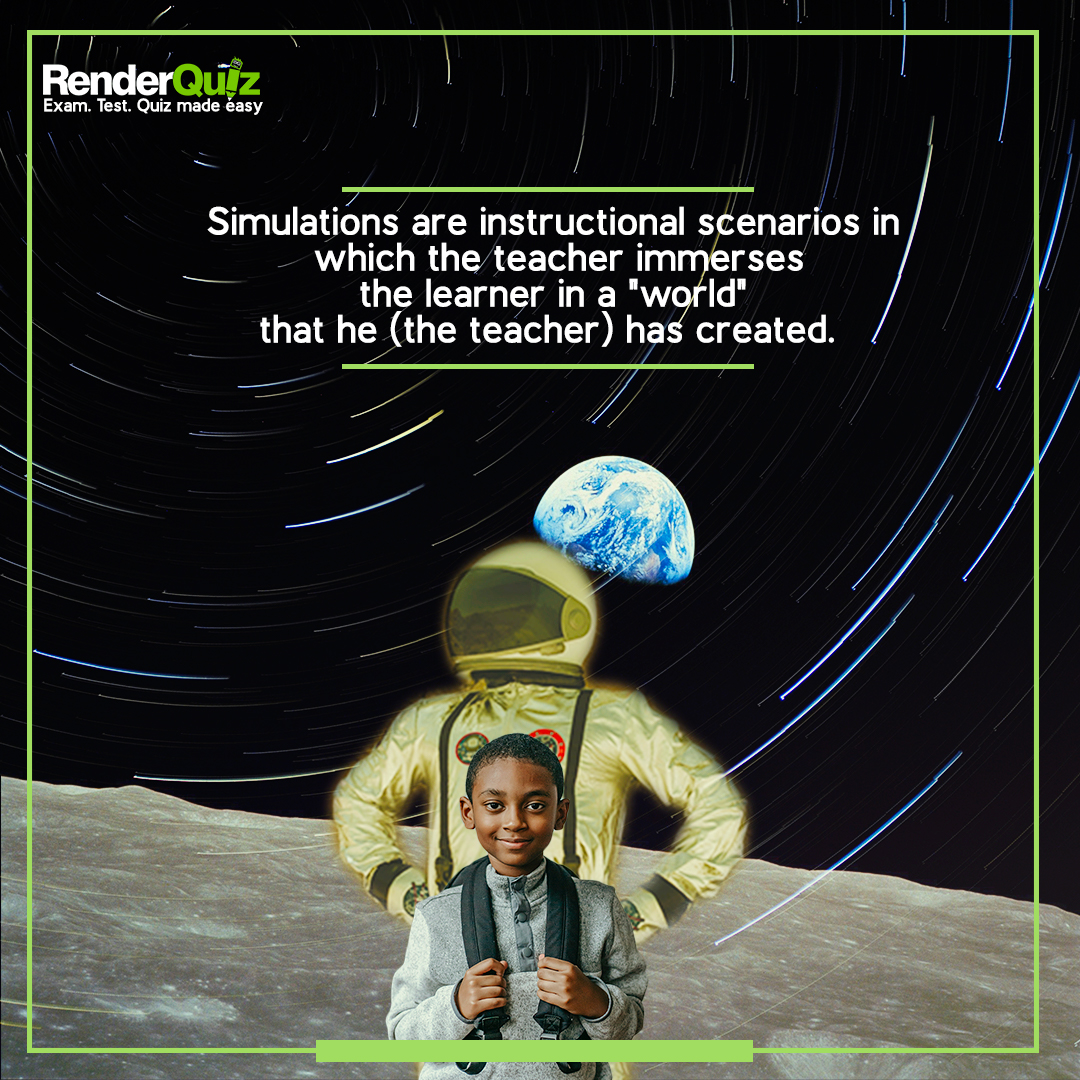Experiential learning is increasingly being used in classrooms to increase knowledge retention rates by up to 85 per cent compared to traditional lesson plans. The experiential learning process utilizes hands-on methods and simulations to drive higher levels of engagement and motivation.
What is a simulation?
Simulations are instructional scenarios in which the teacher immerses the learner in a “world” that he (the teacher) has created. They represent a reality in which students participate. The parameters of this “world” are controlled by the teacher and used to achieve the desired instructional results. Students experience the scenario’s validity and derive meaning from it.
Simulations are a type of experiential learning. It is a strategy that aligns with student-centered and constructivist learning and teaching principles.
Simulations provide understanding to support an underlying knowledge base. They may contain role-playing elements, a game, or an activity that acts as a metaphor.
The non-linearity of simulations and the controlled ambiguity in which students must make decisions define them. The learners’ creativity and dedication typically determine the simulation’s success.
Here are 7 Reasons, Simulations are Important and why you should use them in your Classroom
1. Simulations promote critical and evaluative thinking because they are ambiguous or open-ended and encourage students to think about the consequences of a scenario.
Students find them more deeply engaging than other activities, as they experience the activity first-hand rather than hearing about it or seeing it.
2. Simulations help students to appreciate the environment, politics, community, and culture deeply.
For example, students may understand societal inequity by participating in a resource distribution activity. Debating is used in some large-scale simulations, and simulations can indirectly reinforce research skills.
3. Classroom Simulations Provide a Realistic Learning Experience
Top-level information and data are frequently shared verbally or in writing in traditional lesson plans and learning vehicles. However, by using simulations, a teacher can better understand how to apply this knowledge in the real world, resulting in a more authentic learning experience that benefits students significantly over time.
4. Classroom Simulations Leverage Repetitive Learning
When dealing with a complex subject like physics or advanced mathematics, students may struggle to build or retain knowledge in a short period. In this case, teachers must use materials or teaching methods that emphasize repetition without causing students to disengage with the content or lose interest as they teach. When it comes to driving repetitive learning, simulations are far superior because they can repeat content and key messages more creatively and immersively without losing students’ interest or making them feel trapped in an educational loop. Simulations also provide a layered learning experience that combines verbal questioning and student participation, resulting in a rich and diverse toolbox that is highly engaging and capable of driving higher rates of knowledge retention over time.
5. Classroom Simulations Can be Personalized and Unique
As previously stated, classroom simulations can replicate different and relevant scenarios to aid in the repetitive teaching of concepts. However, this is just the tip of the iceberg when it comes to the potential of classroom and educational simulations.
Simulations can also be adapted and personalized to suit the needs based on individual students, referring to their aptitude, previous academic grades, and individual responses to specific questions.
This is central to the widespread and rapidly growing popularity of educational simulations, which teachers can use in various ways to provide an optimal learning experience for every student, regardless of their unique circumstances.
Teachers can adjust simulations to reflect a student’s growing understanding and knowledge base when teaching practical skills and concepts over time. This has two obvious advantages – firstly, instructors can give students specific simulations that allow them to learn from and process their mistakes as they embark on a learning journey that yields increasingly positive results. Secondly, instructors can alter simulations to focus on specific aspects of the subject matter or topic, particularly when dealing with multi-layered experiences that include both practical and theoretical elements.
So, if a student has accepted the theory behind a specific topic but is still struggling with more practical elements, simulations can be tailored to prioritize this type of learning.
6. Classroom Simulations Utilize Advanced and Relevant Technologies
Recent simulations and experiential learning programs have been designed to integrate advanced and cutting-edge technologies to provide the most user-friendly and efficient learning experience possible.
Advanced technologies like artificial intelligence and machine learning have laid the foundations for web-based simulations in higher education, contributing to the personalized and active learning experience described above.
It benefits individual students and their core learning journey and allows for a better understanding of the relationship between various variables and how changing them can affect outcomes.
The advanced and technical nature of the simulation software allows for simple integration into the existing Learning Management System (LMS) without causing a lot of hard work or significant challenges for administrators.
Using these advanced technologies and innovations in the classroom simulations can provide access to more profound learning and a more substantial accumulation of crucial datasets.
7. Finally, simulations allow students to practice real-time responses and think more deeply about how they can apply theory in a realistic setting, which is the best way to break down and comprehend complex protocols or scenarios. Accurate and detailed simulations can effectively replicate corporeal events, compelling learners to construct real-life responses that can be applied in the real world.



